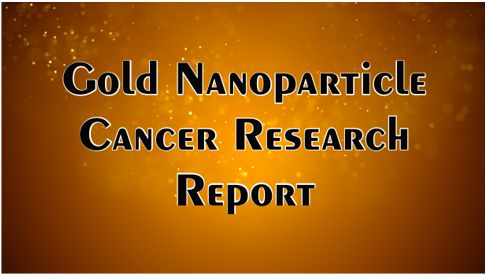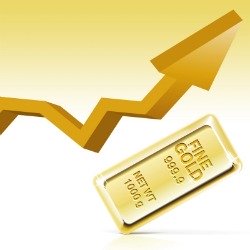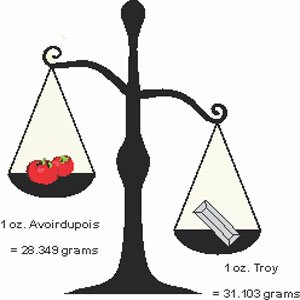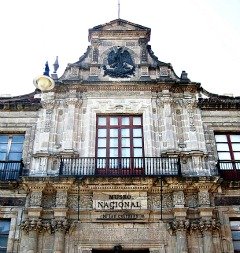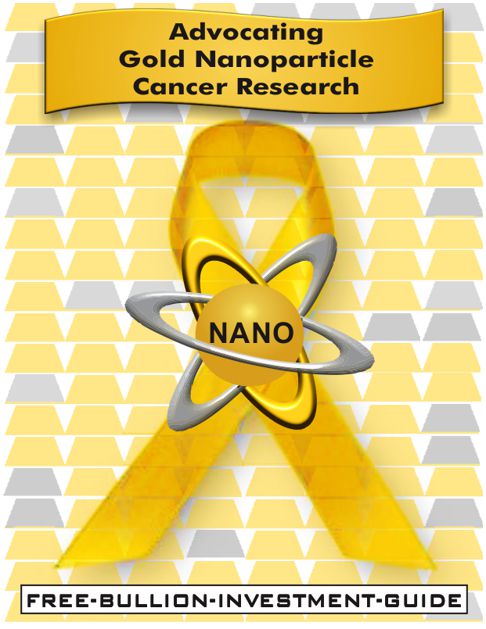Homepage / AuNP Research Blog / Gold Nanoparticle Cancer Research Report #8
Gold Nanoparticle Cancer Research Report
#8
Originally Posted on 06/07/2018 @ 9:40 am EDT
Last Edited on 04/22/2025
by Steven Warrenfeltz
To be the first to receive this guide's blog posts
Subscribe to this Blog
Hello,
For the last seven years, this guide has been informing people about how gold nanoparticles offer a better way to treat cancer than today's methods.
The Free Bullion Investment Guide is unique compared to other guides because it not only serves as a physical precious metals bullion guide but also advocates for Gold Nanoparticle Cancer Research.
Gold Nanoparticles in Cancer Research are designed to kill cancer cells without harming healthy tissues; therefore, it does not have harmful side effects.
Chemotherapy is a biohazard derived from mustard gas and is responsible for hair loss, rather than cancer itself. Chemotherapy should be administered in much smaller doses for the treatment of cancer. Numerous studies have indicated that attaching chemotherapy drugs to gold nanoparticles is a better way to kill cancer cells with minimal side effects compared to how chemotherapy is currently administered.
Medicine should heal, not harm an individual; we need to get out of the 20th-century ways of treating cancer and start using 21st-century methods.
Gold Nanoparticle Cancer Research has repeatedly shown, in study after study, that it should be one of the 21st century's better ways of treating cancer.
In this report, you'll find summaries on all of the latest Gold Nanoparticle Cancer Research.
Below is a glimpse into what you'll find in this issue:
- Bubble Blasting Cancer with Ultra Sound and Gold Nanoparticles
- Exploding Gold NanoRods Destroy Retinoblastoma
- Fast, Accurate, Low-Cost, Point-of-Care Gold Nano-Diagnostics
- Gold Nano-Ayurvedic Medicine
Bubble Blasting Cancer with
Ultra Sound and Gold Nanoparticles
Although the term 'Bubble Blasting' isn't mentioned in this article, it is exactly what researchers from Oxford, Aarhus, and Monash Universities used to kill cancer cells.
It is common knowledge among physicians who specialize in cancer (oncologists) that anti-cancer drugs are inefficient at penetrating cancer cells, which is why they administer them in large doses.
Most cancer drugs are administered to the whole body because they lack targeted delivery systems to reach cancer cells, and when they reach cancer cells, they are often repelled by their defenses.
In this study, researchers devised an ingenious way of delivering the drugs to cancer cells by creating a gold nano "war-head."
In the study, researchers encapsulated anti-cancer drugs and micro-bubbles inside gold nano-cones.
They stated that they used nano gold because of its ease of intrinsic
imaging capabilities, which gives the precious metal significant
advantages as a material for biomedical applications.
The study used gold nano cones around a tumor to attack cancer cells using ultrasound waves, using "in vitro" or outside a living organism methods to conduct their experiments.
The ultrasound waves were directed at the gold nano cones to make them heat up, bursting the micro-bubble inside each nanoparticle, which shot the anti-cancer drug into the tumor, breaking the tumor's defenses against the drug.
The results of their experiments were successful in killing cancer, and in the future, they intend to expand the scope of the research.
Exploding Gold NanoRods
Destroy Retinoblastoma
Retinoblastoma is a type of cancer that affects the retina, which is a thin membrane that lines the inside of the back of the eye. Although this form of cancer is rare, sadly, it specifically only affects children under the age of five.
To date, the primary goal of the treatment has been to save the child's life, but not much care is centered around saving the child's eyesight. But now, a group of researchers out of Canada has developed a way to save the child's life and eyesight with the help of lasers and gold nanorods.
In this study, researchers coated gold nanorods with a thin molecule that helped them find the cancer cells that are inside the eye. After accumulating in and around the cancer cells, the gold nanorods were targeted with a pulse laser, causing them to heat up and explode.
The pulse laser used is called a Femtosecond Pulse Laser; it emits optical pulses at a duration of one quadrillionth of a second (1/1,000,000,000,000,000).
The pulse lasers tiny explosions only killed the cancer cells; they did not harm any healthy tissues surrounding the cancer cells. After a single treatment, the research team found that a cancer cell's survival ability dropped by 90%.
The researchers of this study did their experiments in a controlled environment outside of the body (in vitro); more research must be done in a living specimen (in vivo) to understand its viability.
Read the full article about this ground breaking research for a Rare Form of Childhood Cancer here: Lasering in on Retinoblastoma - Advanced Science NewsFast, Accurate, Low-Cost,
Point-of-Care Gold Nano-Diagnostics
Many developing countries lack the medical infrastructure needed to be able to screen large populations quickly. That was until a European Union-funded project called "Nano4" developed a new way to bring this diagnosis to the front lines of disease outbreaks.
Nano4's new diagnosis tool can find the presence of disease by using a color revelator, which chemically analyzes colors in a fluid to determine the concentrations of different substances. In this case, the color revelator altered the properties of gold nanoparticles (probes) to detect microbes or genes that cause disease.
To date, Nano4 has tested diagnosis technology for the conditions of Zika, MRSA, and Salmonella. In addition, they've been able to diagnose leukemia, lung, and colon cancer using their diagnosis system.
Currently, Nano4 is ramping up production and is working to get the proper certifications to make the product widely available.
Gold Nano-Ayurvedic
Medicine
Dr. Kattesh Katti, a University of Missouri medical professor, brings together an ancient form of Indian Ayurvedic medicine and Gold Nanoparticles to research new 'non-harmful' ways to treat cancer.
Ayurvedic medicine originated in India over 3,000 years ago and uses herbal and spice compounds to treat patients.
Dr. Katti's experiments involve treating prostate and breast cancer with his Gold Nano-Ayurvedic Medicine. The research works by attaching micro-nutrients derived from Ayurvedic herbs and spices to Gold Nanoparticles before injecting them into a patient's body.
Results have shown that these compounds can kill cancer cells while helping the patient’s immune system improve to fight the disease.
I had the pleasure of speaking to Dr. Katti, who mentioned conducting human trials at a research facility in India, and he observed very positive results from his research.
See the full article here: MU med school researcher plumbs potential of herbs in cancer fight - St. Louis Post-DispatchThank You for your Time.
Take Care & God Bless,
Steve
SilverGoldBull - Customer Reviews - 4.9 stars
Other pages, on this Guide, that you
may like...
|
|
|
|
Support this Guide & Paypal Thank You for Your Support |
|
|
 | |||||

Keep this Guide Online
& Paypal
Thank You for
Your Support
with Feedly
Search the Guide
| search engine by freefind | advanced |

Daily
Newsletter
2024 & 2025
Jerusalem of Gold Bullion
Coin photos
(bottom of page)
Mintages
for
2024
Gold & Silver Mexican Libertad
|
Gold Libertads |
Chinese Gold Coin Group Co.
& Chinese Bullion
Help Us Expand our Audience by forwarding our link
www.free-bullion-investment-guide.com.
Thank You!
June's

All Articles were Originally Posted on the Homepage
